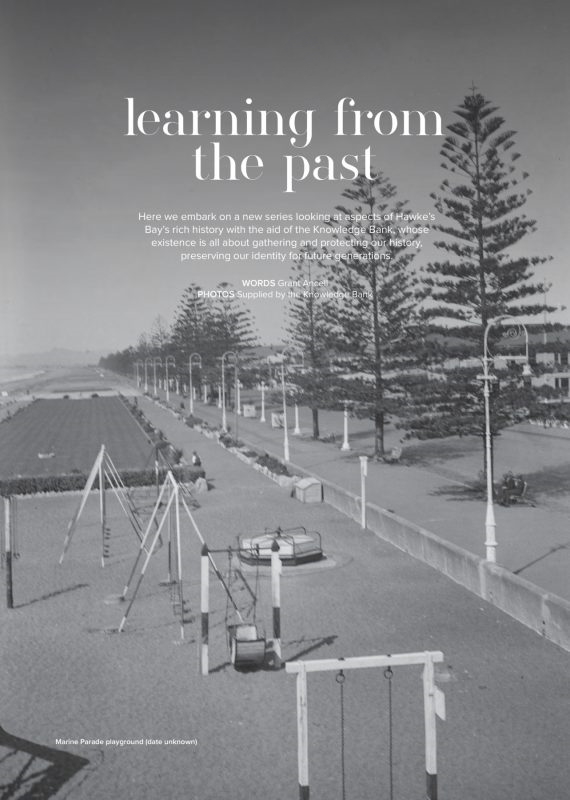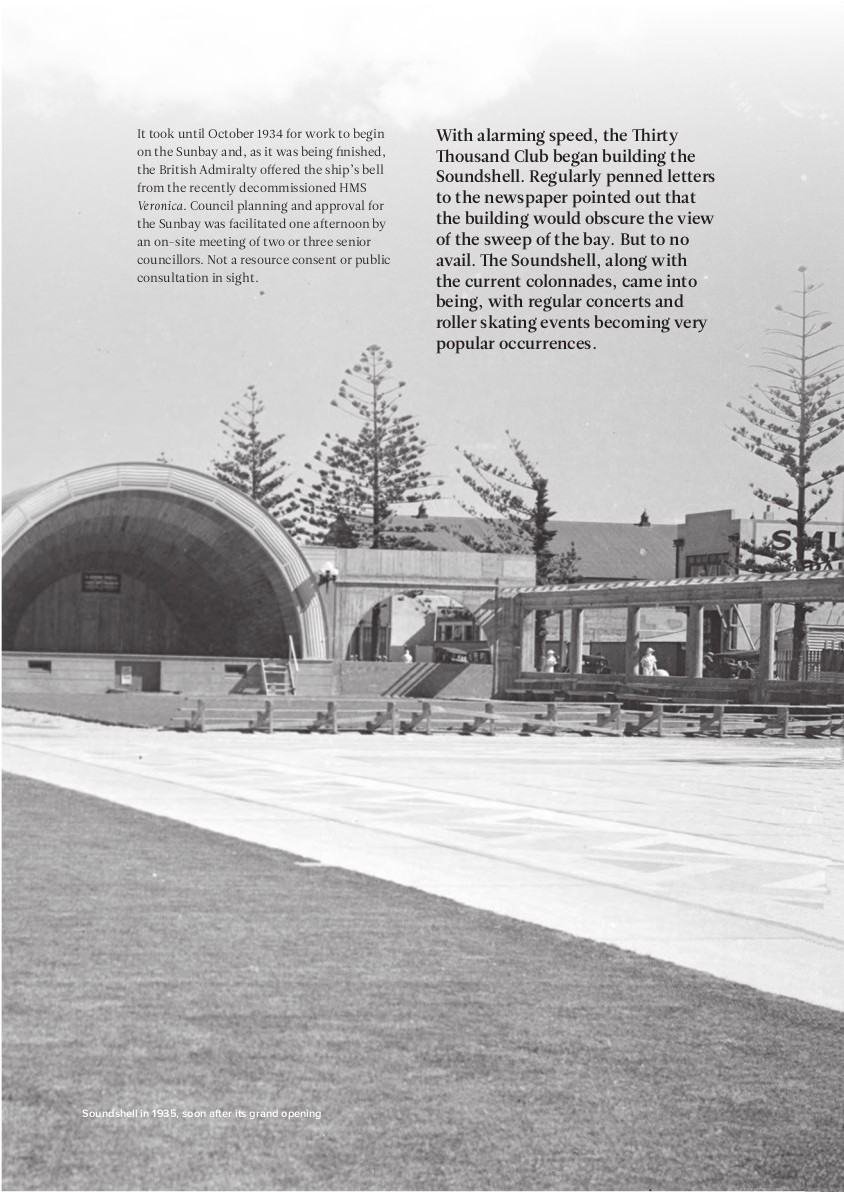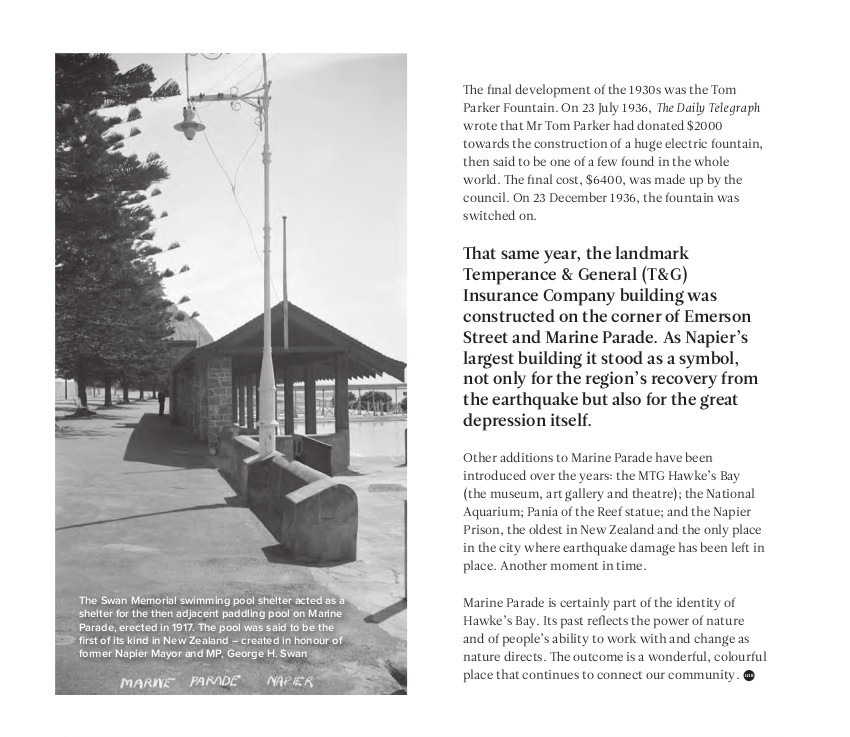We live in the present and spend a lot of time planning and worrying about the future. Given the demands of the present and keeping an eye on what is yet to come may cause some to ask, Why bother with what has been?
History, however, is the study of the past. And while historians do not perform heart transplants, create gaming apps, or arrest criminals, history is an invaluable tool for us to establish our identity – unquestionably one of the reasons why our education buffs encourage its teaching. Family identity is confirmed through genealogy, and many institutions, businesses, communities, and social units use historical fact in this way.
Napier’s Marine Parade is old. Well over 100. And to most of us it has always been ‘just there’. So we accept it as such. But pause a moment and think about how it happened: how it was developed and who planned, approved, financed and constructed it. As a public amenity, if it were today, the council would have played a major role in all the steps. But not in this case. Council, although a player in the process, was not the major operator or contributor.
The Parade’s pathway began in 1899 when, after a particularly bad storm swept up the beach and damaged a few buildings, the seawall was built – at great expense. Its top was two to three metres above the beach and behind it, the council constructed a promenade and planted Norfolk Pines. Move forward to 1914 when the Thirty Thousand Club came into being: a philanthropist organisation, which began to promote the city and develop public amenities that would encourage growth. Move forward again to 1928 when the club was endeavouring to establish a promenade and garden area on the beach. One way of achieving this was to build up the shingle on the seawall’s immediate seaward side. They built a low, sloping wall that allowed the shingle to be swept over it during the incoming tide but trap the shingle so it did not flow away. That wall is still visible, separating the lower lawn from the upper lawn.
Photo caption –
Marine Parade looking down from Bluff Hill (pre-1931 – actual date unknown)
MARINE PARADE, FROM BLUFF HILL

















Do you know something about this record?
Please note we cannot verify the accuracy of any information posted by the community.